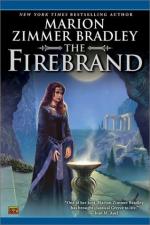|
This section contains 417 words (approx. 2 pages at 300 words per page) |

|
The tale of Troy is most fully told in Homer's epic, and the fortunes of its chief characters further developed in the Golden Age dramas of Aeschylus, especially Agamemnon, the first of his trilogy on the fall of the house of Atreus, and later in Euripides' Trojan Women. The popularization of Greek myth and Homeric epic for new generations of readers has long been a staple in both mainstream historical fiction and in fantasy literature. Feminist interpretations of classical drama and epic poetry which identified their patriarchal context and recast the image of the famous villainesses and victims—Klytemnestra, Medea, and Kassandra—were popular during the 1970s and 1980s, as were new perspectives on prehistory, including Abby Wettan Kleinbaum's The War Against the Ama zons (1983) and Sarah B. Pomeroy's Goddesses, Wives, Whores and Slaves: Women in Classical Antiquity (1975), and especially Merlin Stone's When God...
|
This section contains 417 words (approx. 2 pages at 300 words per page) |

|




